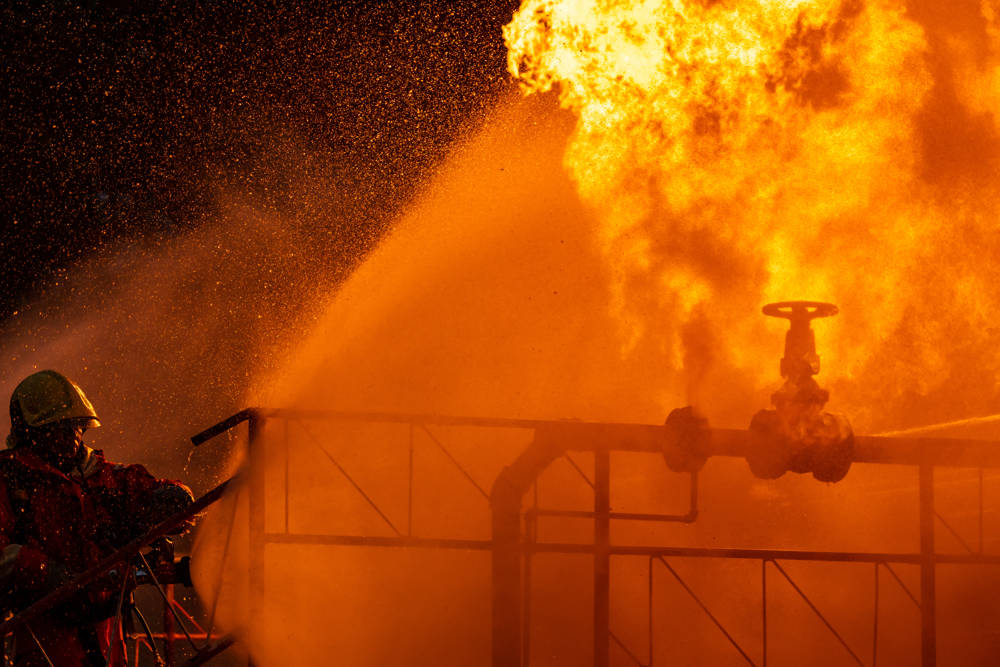

Warning of malfunctions and hazards in good time
Artificial intelligence (AI) has many capabilities – deep learning, for example, is a clever method that enables machines to learn from data. Researchers at RPTU have developed a system that uses precisely this technology to automatically detect unusual and potentially dangerous deviations, known as anomalies.
Finding a specific virus mutant among many others or detecting an error in a factory's production processes: all this is possible with the help of artificial intelligence (AI). To do this, large amounts of data must be processed, filtered, classified, and, if present, anomalies must be detected. “It's about detecting deviations from normality,” explains Professor Marius Kloft, who heads the Machine Learning working group at the RPTU's Department of Computer Science – and whose research focuses precisely on detecting outliers and errors.
“Anomaly detection is relevant for a wide range of areas,” explains Marius Kloft when asked about the practical benefits of this data processing method. For example, it can help to detect errors in chemical plant processes at an early stage. After all, “Every plant failure is not only expensive, but in the worst case can also endanger people and the environment.”
Marius Kloft cites a chemical plant in Geismar, Louisiana, as an example. In 2013, an explosion occurred there, killing one person and injuring many others. The cause was a fault in a heat exchanger: “In plants like this, anomalies in the process can have serious consequences.” Detecting the anomaly would then ensure, for example, that an alarm is triggered automatically at an early stage and appropriate countermeasures can be initiated.
Detecting deviations from the norm even more accurately
Marius Kloft explains that he is working on making anomaly detection methods even more accurate and effective. "Artificial intelligence is on everyone's lips. But it's important to know that it has sub-areas. Machine learning is one such sub-area. And deep learning is a sub-area of that."
Deep learning is a form of machine learning based on deep artificial neural networks. Some laypeople imagine an artificial brain that learns to process information. But Marius Kloft is not comfortable with this brain association: “Neural networks in deep learning are primarily mathematical functions.” Functions that specialize in capturing and representing the semantics – i.e., the core content – of the data: “The more nodes these functions have, the deeper and more nested they become – and the better they are at mapping complex patterns in the data,” explains Kloft.
Recognizing that something is wrong
What is special about his work?
“We have developed a sophisticated system that uses deep learning specifically for anomaly detection. We built a deep neural network precisely for this purpose. It didn't exist in this form before.”
Marius Kloft
There are already methods for detecting anomalies, especially in images. However, these primarily use a generative model, as Marius Kloft adds. In other words, a model that generates new images from existing ones. Put simply, it recognizes that something is wrong with one of the existing images. Marius Kloft: “Such a system recognizes the different image and then says, sorry, but I haven't seen that in my training data.” However, such systems are considered to be inaccurate.
Making it usable for many areas of application
But back to the method developed by Marius Kloft: In very simple terms, the artificial neural network developed by him and his team ensures that order is brought to a large amount of data. How does that work? “You start with the data in its original space – that could be a photo album, for example,” explains Kloft. “The neural network processes this data and transfers it to a so-called semantic space.” Here, it is clearly defined which data is still considered “normal” and which is classified as an outlier, i.e., an anomaly. “In the photo album example, such an outlier could be a blurred image.” Marius Kloft: “Basically, you can say that what occurs frequently is considered normal. And anything outside this range is classified as an anomaly.”
The method developed by him and his team is general and can be adapted to a wide variety of data. For example, this method can be used to detect tumors in histopathological samples. “Every area of application has its own challenges.” The current focus and the focus for the coming years is therefore on adapting the system to the respective problem.
Deep learning in the chemical industry
Together with other computer scientists and process engineers at several universities, he is working in the DFG research group FOR 5359 on making the newly developed deep learning method usable for the chemical industry: “It should help to detect errors in chemical processes at an early stage in order to prevent accidents and shutdowns.” The problem in this field of application, as Marius Kloft adds:
“There is very little data available, or companies are not making it available.” In addition, all data is often the same. For example, in an optimally configured chemical plant, the same process is always carried out over a long period of time under ideally identical conditions – such as the conversion of raw materials into products. In the best-case scenario, sensors always measure almost the same temperature, the same pressure, and so on. In short, there are inherently too few anomalies from which the system could learn what exactly constitutes a deviation from the norm. Nevertheless, such errors can occur.
Towards Autonomous System Operation
The research team has therefore come up with a number of ideas to increase the amount of data: they carry out chemical processes in the laboratory themselves to collect data. In addition, further data is artificially synthesized with the help of generative artificial intelligence.
The aim of the work is also to explain the information generated by the method, visualize it, and present it in a clear and descriptive manner, as Marius Kloft adds: “It must be quick and easy to understand so that specialists in the chemical industry can use these procedures and respond to the corresponding technical recommendations.” The long-term goal of the research group is to develop methods for the autonomous operation of plants in the chemical industry. They have the key tool for this at their disposal: “Thanks to deep learning, our anomaly detectors will be much more sensitive than conventional techniques.”
In another joint project called “Physics-informed anomaly detection”, which is being carried out together with partners from science and industry, the task of anomaly detection is to be transferred to physical processes in production: In laser powder bed melting, for example, a process commonly used in aerospace, automotive, and medical technology to manufacture complex metal components, even the smallest deviations in heat distribution can cause defects such as pores, cracks, or missing fusions. Here, too, the aim is to automatically detect such rare irregularities.

EAGER TO EXPLORE DEEP NEURAL NETWORKS?
The following scientific publications provide more in-depth information:
L. Ruff, R. Vandermeulen, N. Görnitz, L. Deecke, S. Siddiqui, A. Binder, E. Müller, and M. Kloft. Deep One-Class Classification. Proceedings of the International Conference on Machine Learning (ICML), 80:4393-4402, 2018
>> READ PUBLICATION
M. Hussong, S. Varshneya, P. Rüdiger-Flore, M. Glatt, M. Kloft, and J. C. Aurich. A process planning system using deep artificial neural networks für the prediction of operation sequences. Procedia CIRP, 120:135-140, 2024.
>> ACCESS ARTICLE

Diese Themen könnten dich auch interessieren:



